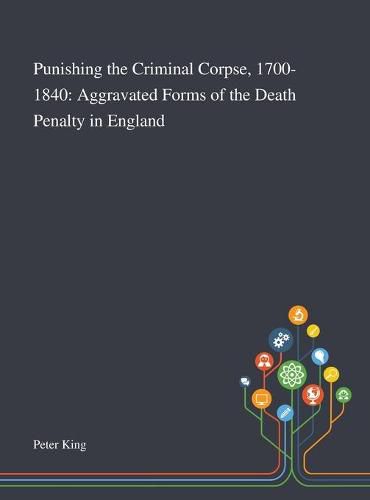Readings Newsletter
Become a Readings Member to make your shopping experience even easier.
Sign in or sign up for free!
You’re not far away from qualifying for FREE standard shipping within Australia
You’ve qualified for FREE standard shipping within Australia
The cart is loading…






This title is printed to order. This book may have been self-published. If so, we cannot guarantee the quality of the content. In the main most books will have gone through the editing process however some may not. We therefore suggest that you be aware of this before ordering this book. If in doubt check either the author or publisher’s details as we are unable to accept any returns unless they are faulty. Please contact us if you have any questions.
This book analyses the different types of post-execution punishments and other aggravated execution practices, the reasons why they were advocated, and the decision, enshrined in the Murder Act of 1752, to make two post-execution punishments, dissection and gibbeting, an integral part of sentences for murder. It traces the origins of the Act, and then explores the ways in which Act was actually put into practice. After identifying the dominance of penal dissection throughout the period, it looks at the abandonment of burning at the stake in the 1790s, the rapid decline of hanging in chains just after 1800, and the final abandonment of both dissection and gibbeting in 1832 and 1834. It concludes that the Act, by creating differentiation in levels of penalty, played an important role within the broader capital punishment system well into the nineteenth century. While eighteenth- and early nineteenth-century historians have extensively studied the ‘Bloody Code’ and the resulting interactions around the ‘Hanging Tree’, they have largely ignored an important dimension of the capital punishment system - the courts extensive use of aggravated and post-execution punishments. With this book, Peter King aims to rectify this neglected historical phenomenon. This work was published by Saint Philip Street Press pursuant to a Creative Commons license permitting commercial use. All rights not granted by the work’s license are retained by the author or authors.
$9.00 standard shipping within Australia
FREE standard shipping within Australia for orders over $100.00
Express & International shipping calculated at checkout
This title is printed to order. This book may have been self-published. If so, we cannot guarantee the quality of the content. In the main most books will have gone through the editing process however some may not. We therefore suggest that you be aware of this before ordering this book. If in doubt check either the author or publisher’s details as we are unable to accept any returns unless they are faulty. Please contact us if you have any questions.
This book analyses the different types of post-execution punishments and other aggravated execution practices, the reasons why they were advocated, and the decision, enshrined in the Murder Act of 1752, to make two post-execution punishments, dissection and gibbeting, an integral part of sentences for murder. It traces the origins of the Act, and then explores the ways in which Act was actually put into practice. After identifying the dominance of penal dissection throughout the period, it looks at the abandonment of burning at the stake in the 1790s, the rapid decline of hanging in chains just after 1800, and the final abandonment of both dissection and gibbeting in 1832 and 1834. It concludes that the Act, by creating differentiation in levels of penalty, played an important role within the broader capital punishment system well into the nineteenth century. While eighteenth- and early nineteenth-century historians have extensively studied the ‘Bloody Code’ and the resulting interactions around the ‘Hanging Tree’, they have largely ignored an important dimension of the capital punishment system - the courts extensive use of aggravated and post-execution punishments. With this book, Peter King aims to rectify this neglected historical phenomenon. This work was published by Saint Philip Street Press pursuant to a Creative Commons license permitting commercial use. All rights not granted by the work’s license are retained by the author or authors.